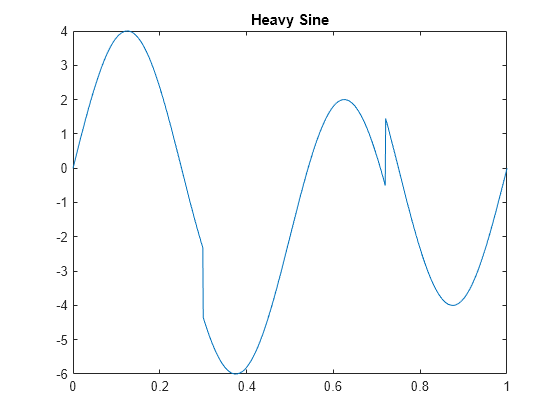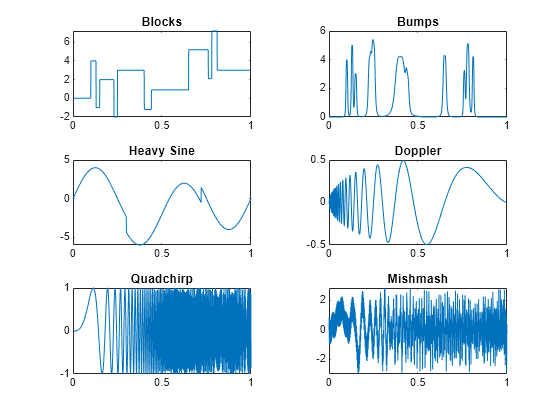wnoise
Noisy wavelet test data
Description
Examples
Input Arguments
Output Arguments
References
[1] Donoho, David L, and Iain M Johnstone. “Ideal Spatial Adaptation by Wavelet Shrinkage.” Biometrika 81, no. 3 (September 1, 1994): 425–55. https://doi.org/10.1093/biomet/81.3.425.
[2] Donoho, David L., and Iain M. Johnstone. “Adapting to Unknown Smoothness via Wavelet Shrinkage.” Journal of the American Statistical Association 90, no. 432 (December 1995): 1200–1224. https://doi.org/10.1080/01621459.1995.10476626.
Version History
Introduced before R2006a


